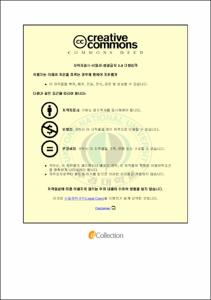폴리아미드이미드-콜로이드 실리카 나노 하이브리드 소재의 제조 및 특성에 관한 연구
- Abstract
- Fabrication and Characteristics of Nano Hybrid Materials in Polyamideimide-Collidal system.
Go-Un, Park
Department of Polymer Engineering, The Graduate School,
Pukyong National University
Abstract
Organic/inorganic hybrid composites that utilize polymers as a matrix have been recognized as one of new class advanced materials, because they can take benefit by combining the merits of both inorganic materials (rigidity and thermal stability) and organic polymers (flexibility, ductility, and processability). In terms of inorganic materials for hybrid composites, silica has been widely used owing to its low dielectric property and high thermal stability which are of importance for microelectronic applications.
Polyamide-imide(PAI) is a kind of thermoplastic resin, has good high-temperature resistance, outstanding mechanical properties and excellent oxidative stability, all of which have led PAI to have been widely used with electronic materials, adhesives, composite materials, fiber, and film material. Silica nanoparticles as a very important inorganic material have emerged as an area of intense current interest motivated because of their special physical and chemical properties, such as their small size, strong surface energy, high scattered performance, and thermal resistance.
In this study, the functional PAI-Colloidal silica nano hybrid material were prepared via simple blending. 7nm, 12nm, 20nm, 40nm silica
nanoparticles were well dispersed in the PAI matrix with alkoxy silane, and the amount of silica nanoparticles to PAI was investigated to be from 10 wt%. The PAI-Colloidal silica nano hybrid material were made via sol-gel process of the mixture of organo silane. The PAI-Colloidal silica nano hybrid material were characterized by Fourier transform infrared(FT-IR) spectra, scanning electron microscope(SEM), thermo gravimetric analysis(TGA).
- Issued Date
- 2011
- Awarded Date
- 2011. 8
- Type
- Dissertation
- Publisher
- 부경대학교
- Department
- 대학원 고분자공학과
- Advisor
- 박성수
- Table Of Contents
- Contents
Contents.......................................................................................................................ⅰ
List of Tables...........................................................................................................ⅳ
List of Figures..........................................................................................................ⅴ
Abstract.......................................................................................................................ⅶ
1. 서론..........................................................................................................................1
2. 이론적 배경.............................................................................................................4
2.1. 유ᆞ무기 하이브리드 소재.............................................................................4
2.2. 유ᆞ무기 하이브리드 소재의 기술 개발 동향..........................................7
2.3. 유ᆞ무기 하이브리드 소재의 제조 ...........................................................10
2.3.1. 실리카 표면 개질.......................................................................................10
2.3.2. 유ᆞ무기 하이브리드 소재의 제조 방법..............................................13
2.3.2.1. 블렌딩법....................................................................................................13
2.3.2.2. 졸-겔법......................................................................................................13
2.3.2.3. In situ 법..................................................................................................20
2.4. 유ᆞ무기 하이브리드 코팅............................................................................21
2.4.1. 내마모성 하드코팅.....................................................................................23
2.4.2. 접착방지, 오염방지 및 발수 코팅 .......................................................24
2.4.3. 정전기방지 코팅.........................................................................................25
2.4.4. 기체차단성 코팅.........................................................................................26
2.5 Polyamideimide 수지......................................................................................28
2.5.1. Polyamideimide 특성................................................................................30
2.5.2. Polyamideimide 용도................................................................................31
3. 실험..........................................................................................................................34
3.1. 시약.....................................................................................................................34
3.2. Polyamideimide(PAI)-silica 하이브리드 합성.........................................37
3.2.1. Polyamideimide(PAI) 수지의 제조........................................................37
3.2.2. Colloidal silica(CS) 졸의 실란 처리.....................................................37
3.2.3. Polyamideimide(PAI)-silica 하이브리드 합성....................................41
3.3. 코팅 막 제조....................................................................................................44
3.3.1. Aluminum 기판 코팅................................................................................44
3.3.2. Glass 기판 코팅.........................................................................................44
3.4. 측정 및 분석방법............................................................................................45
3.4.1. 실란 처리 된 colloidal silica(CS) 졸의 측정 및 분석.....................45
3.4.2. Polyamideimide-CS 하이브리드 물질의 측정 및 분석...................45
3.4.3. Polyamideimide-CS 하이브리드 코팅막의 측정 및 분석...............46
3.4.3.1. 접착 특성................................................................................................46
3.4.3.2. 연필경도..................................................................................................48
3.4.3.3. 굽힘강도..................................................................................................50
4. 결과 및 고찰.........................................................................................................52
4.1. 화학구조 분석..................................................................................................52
4.1.1. FT-IR을 이용한 실란 처리 된 CS 화학구조 분석..........................52
4.1.2. FT-IR을 이용한 Polyamideimide-CS hybrid 화학구조 분석.......54
4.2. 분광학적 특성..................................................................................................59
4.2.1. UV-vis.........................................................................................................59
4.3. 기계적 특성......................................................................................................61
4.3.1. 접착특성과 연필경도.................................................................................61
4.3.2. 굽힘강도.......................................................................................................63
4.4. 열적분석............................................................................................................65
4.4.1. TGA 분석....................................................................................................65
4.4.2. DSC 분석.....................................................................................................68
4.5. 형태학적 분석..................................................................................................71
4.5.1. 미세구조 분석 (FE-SEM).......................................................................71
5. 결론..........................................................................................................................75
6. 참고문헌.................................................................................................................77
- Degree
- Master
- Files in This Item:
-
-
Download
 폴리아미드이미드-콜로이드 실리카 나노 하이브리드 소재의 제조 및 특성에 관한 연구.pdf
기타 데이터 / 24.93 MB / Adobe PDF
폴리아미드이미드-콜로이드 실리카 나노 하이브리드 소재의 제조 및 특성에 관한 연구.pdf
기타 데이터 / 24.93 MB / Adobe PDF
-
Items in Repository are protected by copyright, with all rights reserved, unless otherwise indicated.